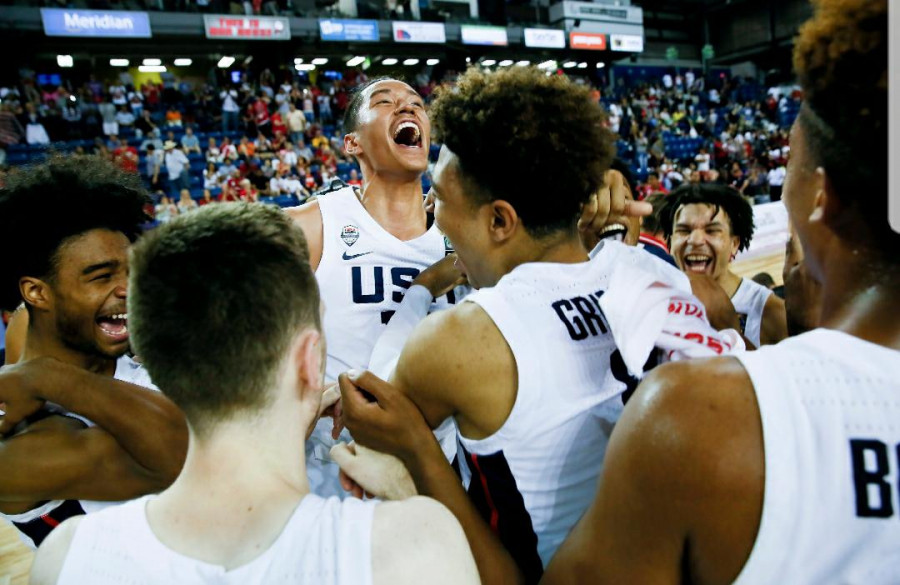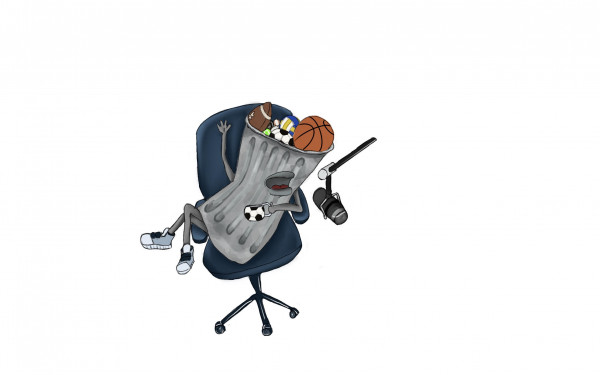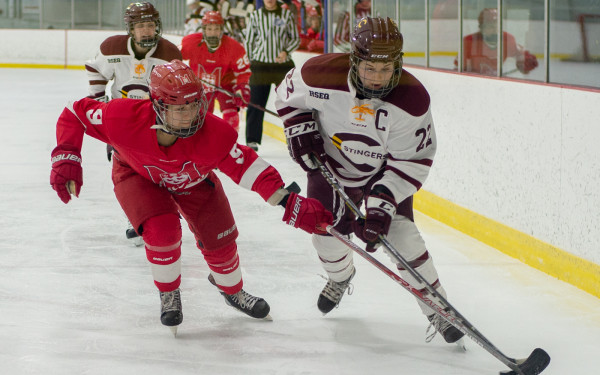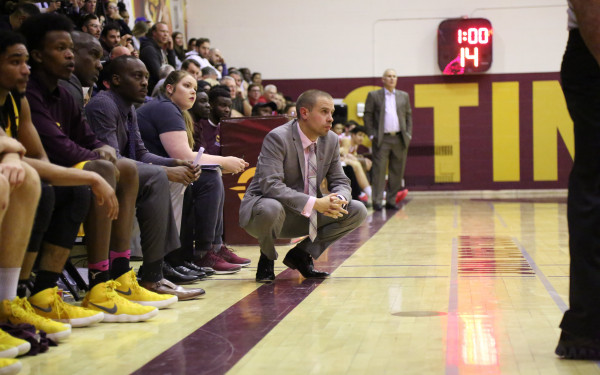The might of the NCAA
Why American men’s college sports receive more funding, coverage, and hype than Canadian U Sports
Millions across North America tune in to American college athletics’ biggest events every year. The National College Athletic Association rakes in hundreds of millions of dollars in annual revenue, reaching the $1 billion mark in 2019. But why are university sports such an attraction in the United States? And why is it so different in Canada?
March Madness, officially called the NCAA Men's Division I Tournament, is a live-streamed 68-team American college basketball tournament that lasts three weeks. People from all over the United States tune in to watch this tournament and to pick their bracket, so to try to predict which team will win.
The reason March Madness is so popular, even among people who normally show no interest in basketball, is because Ivy League colleges and small colleges compete together and the outcome is always unpredictable. People also tend to root for the small college of about 3,000 people, because who doesn’t love a good underdog story?
It can be argued that American college sports are more popular in Canada than Canadian college sports are. This is due to several reasons.
Firstly, the scholarships the NCAA offers are much more appealing than the scholarships U Sports offers, causing the best Canadian college athletes to consistently be poached by American universities.
However, U Sports scholarships offer an education that prioritizes academics over sports, whereas NCAA scholarships allow athletes to miss much more school and prioritizes sports performance.
Joel Barrette, who had enrolled in Berkeley’s electrical engineering and computer science program, reported to The Ubyssey that academic advisors always tried to get him to change majors. He said there was “not enough time in the day” for him to juggle such an intense program and a sports scholarship. He ended up returning to Canada after a career-ending injury because tuition at Berkeley would’ve been too expensive without his scholarship.
Yet, Canada has seen more than one medical student successfully juggle a sports career and medical school. Think McGill graduate Laurent Duvernay-Tardif, who recently put his football career on hold to use his medical degree to help in the fight against COVID-19.
Forcing students to focus on their sports career rather than on their academics may be a reason why college sports are so hyped in the US. A great deal of pressure is placed on athletes to perform, and not all succeed, creating an atmosphere of intense competition Canadian college sports do not have.
Secondly, American college sports are much more televised than Canadian college sports. Canada has nothing like March Madness, and this is tied to ensuring college athletes focus on their academics and don’t get too distracted by needless pomp and circumstance. Though, U Sports’ budget would not allow anything close to March Madness even if it wanted to.
In fact, the $400 million provincial budget cut from Alberta in 2020 caused the University of Alberta to no longer be able to compete in several varsity sports.
The downside of sports not being valued to the same degree as academics in Canada is that sports are often penalized when budget cuts to education come into effect.
Of course, women’s sports events garner much less media attention and hype both in Canada and in the USA. This is not because they haven’t existed for as long, in fact, women’s college sports events have existed since the 1890s. The Association for Intercollegiate Athletics for Women was formed in 1971 due to the growing number of women’s college sports teams that existed by the 1960s.
In 1972, Title IX was passed, a federal law that prohibited sex-based discrimination in schools. This caused tension between the AIAW and the NCAA, which peacefully coexisted up until this point. The NCAA contested Title IX in court, claiming it shouldn’t apply to intercollegiate sports. When it lost in 1978, it pushed a merger onto the AIAW, threatening to either take control of the association or run it into the ground.
Peg Burke, who was the president of the AIAW in 1976 and in 1977, explained to The Wall Street Journal that a university athletic director told her that “If you girls—and I’m sure he said girls—don’t agree to this, the NCAA will throw a million dollars in the pot and destroy the whole lot of it.”
The NCAA essentially proceeded to out-offer sponsors of women’s sports events, lower their membership fees, increase television exposure, and force universities to pick a side by purposefully scheduling sports events for men on the same days as sports events for women were already scheduled.
By the 1980s, the AIAW lost approximately 80 per cent of its membership to the NCAA. The following year, the AIAW sued the NCAA for “unlawfully using its monopoly power in men’s college sports to facilitate its entry into women’s college sports and to force the AIAW out of existence” but lost. In 1983, due to overwhelming legal fees and very little income, the AIAW was forced to shut down.
New NCAA women’s teams were resented by male administrators, who saw them as burdensome for universities. Hundreds of women administrators and coaches either lost their jobs or were demoted due to the NCAA’s absorption of women’s collegiate sports. When, in 1971, over 90 per cent of women’s college sports teams were coached by women, by 1984, the percentage dropped to 51 per cent. Today, only 40 per cent of women’s teams are coached by women and 89 per cent of Division I athletic directors are men.
So, when there is talk about the popularity of college sports in the USA, it’s purely talk about the popularity of men’s college sports. Remember how March Madness is another name for NCAA Men's Division I Tournament? The NCAA Women’s Division I Tournament does not nearly get as much attention as the men’s tournament does.
In 2014, a total of over 8 hours were dedicated to men’s NCAA basketball stories across American news channels, while only half an hour was dedicated to women’s NCAA basketball stories.
Many people have started calling March Madness “Spring Sexism” due to this fact. Women’s basketball coach Muffet McGraw had this to say on the matter last month:
“While I appreciate the outrage, the fact that there’s a huge disparity between men’s and women’s sports is hardly breaking news. We have been fighting this battle for years and frankly, I’m tired of it. Tired of turning on the TV to see ‘NCAA basketball tournament’ only to realize that of course that means men’s. Tired of seeing Twitter accounts called March Madness and Final Four that are run by the NCAA but only cover men’s bball. Tired of having to preface everything we do with the word ‘Women's’ which would be fine if the men had to do the same, but they don’t and when they don’t it makes us look like the JV tournament to their event.
The fact that there are inequities in facilities, food, fan attendance, and swag bags is not what bothers me. What bothers me is that no one on the NCAA’s leadership team even noticed. While corporations across the country are scrambling to hire women and set up diversity and inclusion teams, the NCAA had an opportunity to highlight how sports can be a place where we don’t just talk about equality we put it on display. To say they dropped the ball would be the understatement of the century.
This is the issue that women have been battling for decades. We have accepted our fate for far too long. We have taken the crumbs from the table we don’t even have a seat at and we didn’t complain. We were happy to be there. After winning a national championship, we didn’t proudly present a big check to our university, we got a pat on the back and a ‘way to go girl.’ Well time’s up gentlemen. This generation of women expects more and we don’t stop until we get it.”
Women’s college sports are so underrepresented in the media that - still last month - CBS claimed that Rudger’s University won their first game in an NCAA tournament since 1983. In fact, the women’s team of the same university had won 36 of them since then. But, as McGraw explained in her tweet, when one talks about the NCAA, they are talking about the men’s NCAA unless they prefix the NCAA with “women’s.”
In short, American college sports receive more funding, media, and hype than Canadian college sports because they have always been focused on training professional athletes. Canadian college sports are seen as extracurricular, and Canadian universities do not expect their athletes to pursue sports as a career, as athletes’ academics are prioritized.


_600_832_s.png)




_600_375_90_s_c1.jpg)